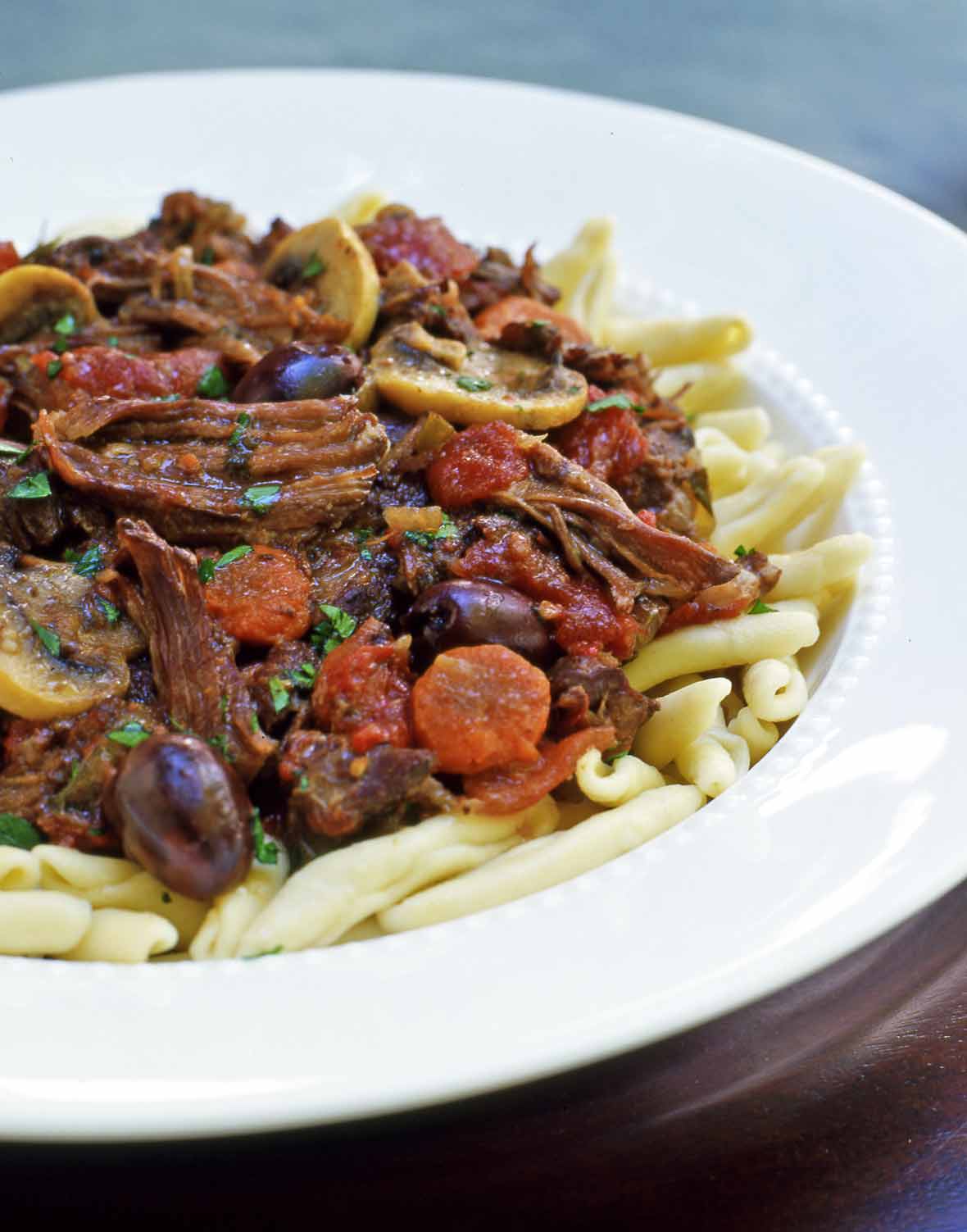
Like many hearty stews, this daube is best served the day after you make it. In fact, some cooks gently heat and cool it over several days for maximum flavor. If you can’t wait, though, no problem. You’ll find it utterly irresistible right out of the pot.–David Leite
What Wine to Serve with a French Daube?
“Daube” sounds incomparably more sophisticated than “beef stew,” doesn’t it? Actually, come to think of it, just about everything sounds more esteemed in French, including wine, n’est-ce pas? The best wine to use in this beef stew—or rather, daube—is something from the same region as the ingredients, namely the South of France. A lovely Côtes du Rhône would do quite nicely—not to mention inexpensively.
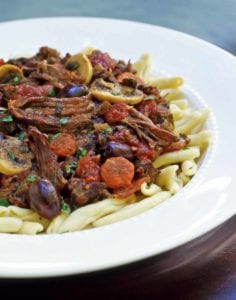
Daube ~ French Beef Stew
Ingredients
- 1/2 cup sliced carrots
- 1/4 cup sliced celery
- 1/4 cup chopped onion
- 3 tablespoons olive oil
- 2 tablespoons mixed herb: flat-leaf parsley, thyme, crumbled bay leaf, and rosemary or savory
- 2 teaspoons chopped garlic
- 2 cups dry red or white wine
- Salt
- 12 black peppercorns
- 1 pound beef shank
- 1 pound beef short ribs
- 1 pound grainy beef chuck, cut into small chunks
- 2 medium onions, thinly sliced
- 1/2 cup pancetta, cut into 1/4-inch dice
- 35 ounces canned tomatoes, seeded and chopped
- Bouquet garni of bay leaf, flat-leaf parsley sprigs, and thyme leaves, tied together
- 1 tablespoon orange zest
- Parchment paper, cut to fit the inside diameter of the pot
- 1/4 pound fresh mushrooms, sliced
- 2 dozen brine-cured black olives, rinsed and pitted
- 2 tablespoons chopped flat leaf parsley
- Cooked noodles (optional), for serving
Instructions
- In a skillet over low heat, warm the oil. Add the carrots, celery, and onion and cook, stirring occasionally, until softened. Add the herbs and garlic and continue cooking until the flavors and aromas are released, just a minute or two. Add the wine, salt, and peppercorns, bring the liquid to a boil, and then simmer for 10 to 15 minutes, until the liquid is reduced somewhat. Remove the skillet from the heat and let cool completely.
- Place the various cuts of beef in a bowl and pour the cooled wine mixture over the beef. Cover and refrigerate overnight, turning the meat once or twice.
- Preheat the oven to 350°F (175°C). Place the meat and the marinade in a heavy casserole or Dutch oven with a tight-fitting lid. Scatter the sliced onions and then add the pancetta, tomatoes, bouquet garni, and orange zest. Wet the parchment circle and place it on top, pressing down to remove any air bubbles. Cover and cook for 1 hour. Lower the temperature to 250°F (120°C) and cook an additional 3 to 4 hours, until the meat falls apart easily when prodded with a fork.
- Set the pot on top of the stove over very low heat. Remove the parchment and stir in the mushrooms and olives. Cook until the mushrooms are tender, about 10 minutes. Remove the bouquet garni and skim the fat from the top of the cooking liquid. Adjust the seasoning. Sprinkle with chopped parsley and serve over cooked noodles, if desired.
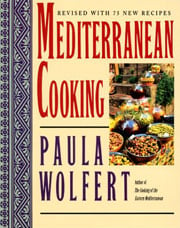
Nutrition
Nutrition information is automatically calculated, so should only be used as an approximation.
Recipe Testers’ Reviews
Simple, flavourful, and comforting. What more could you ask for this time of year?! Not to mention this recipe makes enough to feed a hungry family of 5 twice, with a little more to spare still. Well worth the effort of planning ahead.
This recipe does take a couple of days to make, but it’s pretty simple, and a big bonus…you don’t have to brown the meat. So no extra mess! Since this is a rich stew, I wanted something bright and acidic to have alongside it. I decided on a Green Bean Salad and wide egg noodles to serve with it. Turned out to be a good decision.
I did grab a bottle of Côtes du Rhône as suggested in the recipe, and enjoyed a glass with dinner that night. The last little thing I did to finish the stew off was add some more orange zest just before serving. I love the combination of olives and oranges and wanted just a little taste of more orange.
If entertaining this would be a lovely simple meal that you can make ahead and gets better after sitting for a day or two. It’s a sure way to impress your guests.
The finished dish is absolutely spectacular. I was super suspicious of the lack of browning, and I’m still a little suspect of the whole peppercorns and crumbled bay leaf I was unable to fish out. But that’s not stopping me from having it for every meal. I have a huge batch of pureed cauliflower, and I’m being gluttonous but somehow healthful-ish at the same time. And the best part – it gets better every time I reheat it. Heavenly.


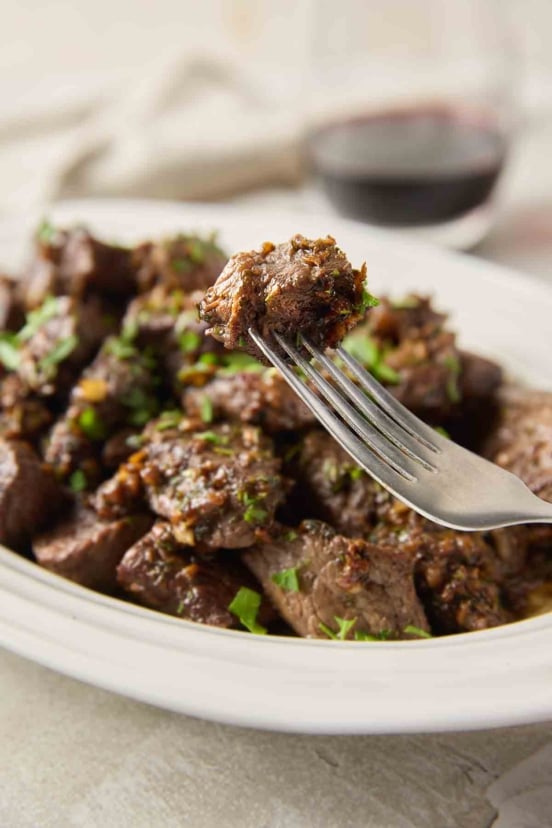
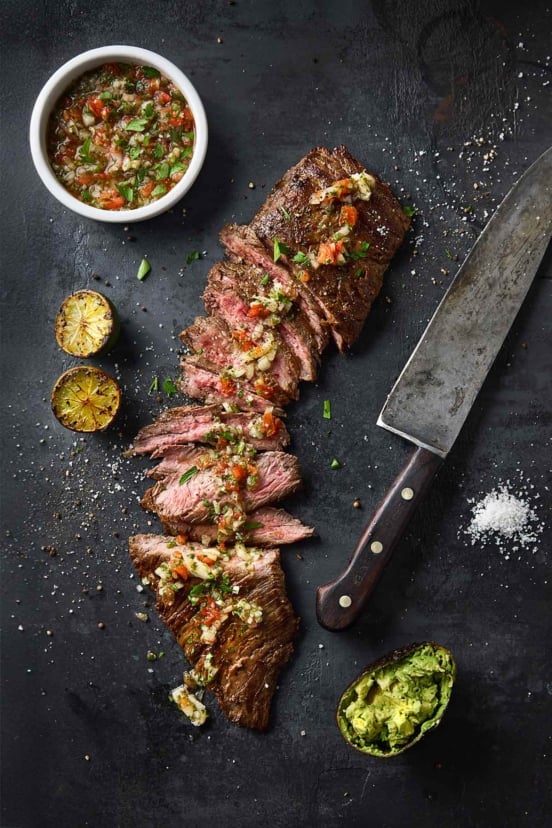
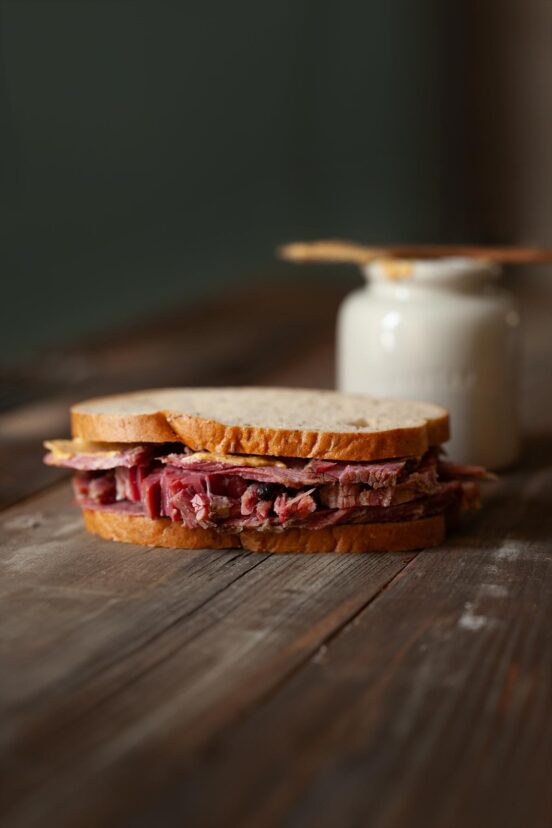









I remember from my childhood, my father would make this, as a young boy he called it olive stew. The house smelled amazing while this was cooking. One thing I did change, is I used venison instead of beef and added a little beef bone broth since the venison was so lean. The flavor profile worked well with the venison, next I will try to add some additional fat
It looks fantastic, Jeremy! Thanks so much for sharing with us.
I followed this recipe over three chilly days and served the dish on a cold January night. The stages are easy to follow – and I recommend following them, including giving the stew time to cool and develop – and the final daube delighted my guests – and me, as well. It’s certainly something I’ll be making again.
stephencooksfrench, this is one of my favorite recipes on the site. And your photo looks fantastic. The secret really is letting the flavor develop over several days. C’est magnifique!